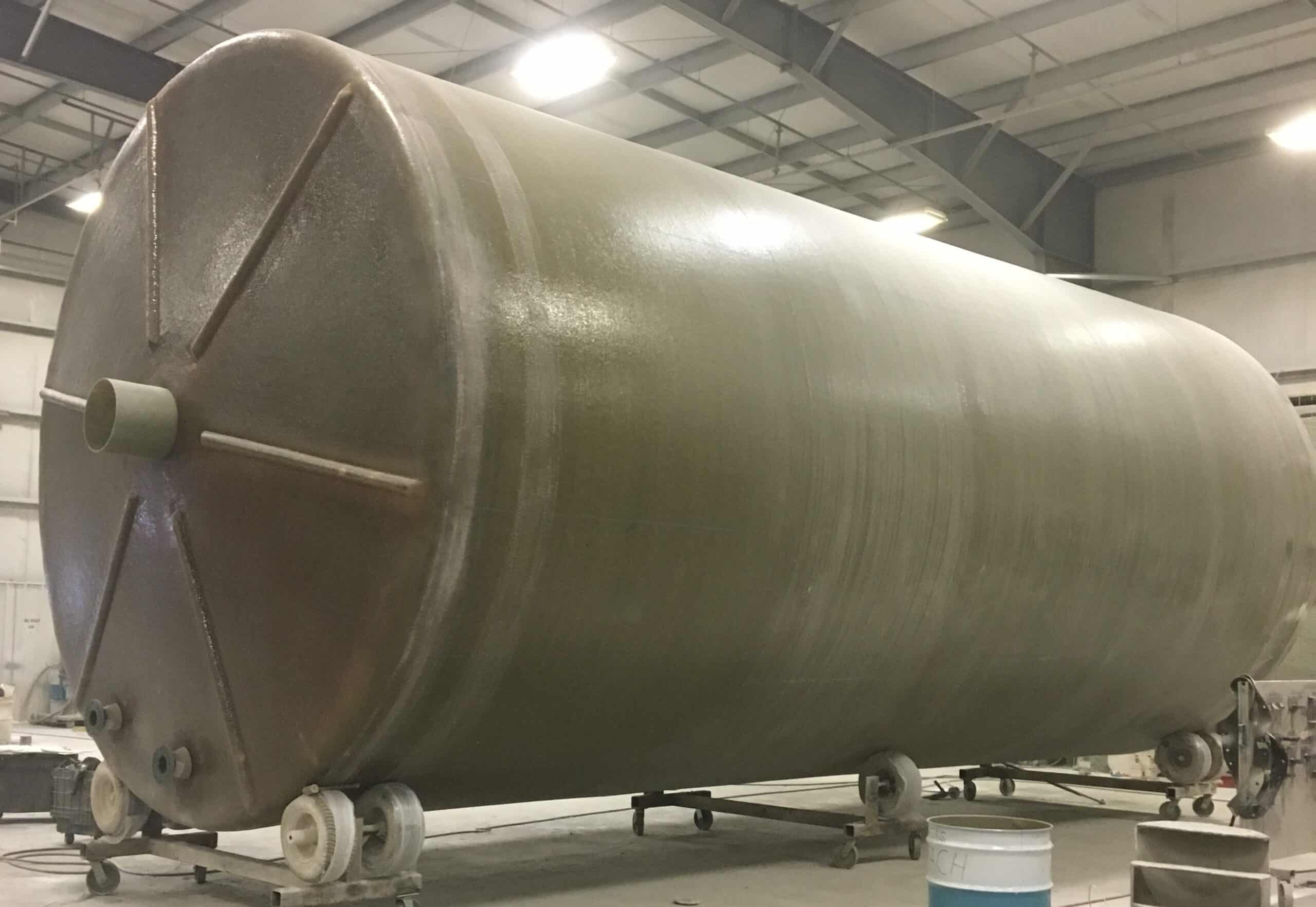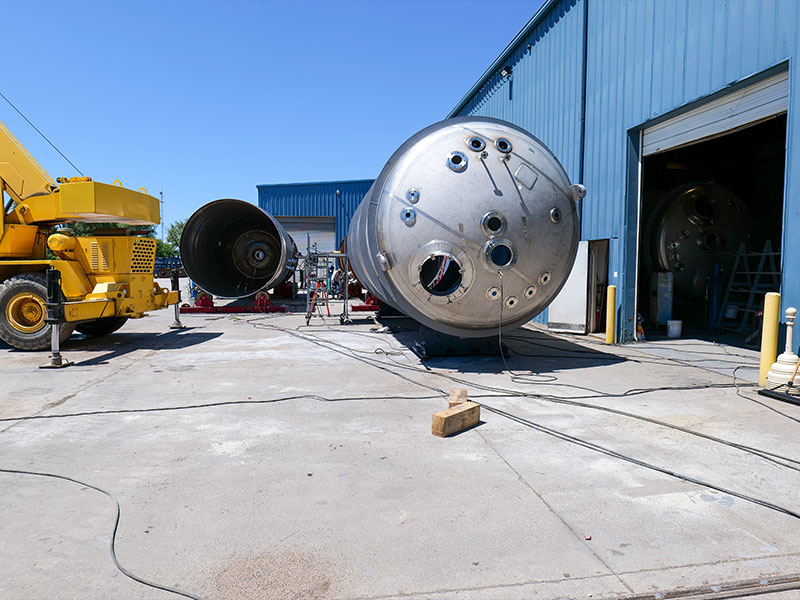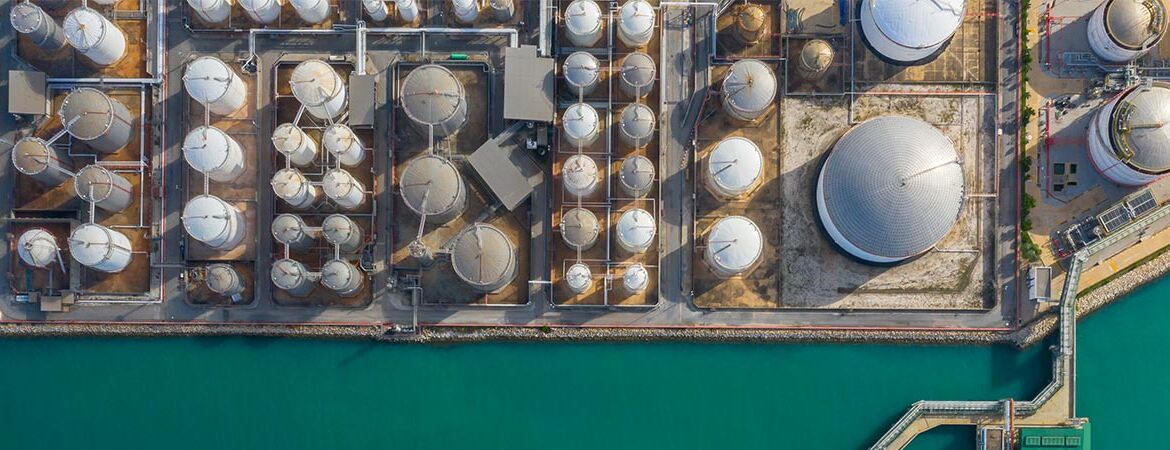The Future of Storage Tank Manufacturing: Trends and Technologies to Watch
The storage tank manufacturing field gets on the cusp of a crucial evolution, driven by arising trends in clever materials, automation, and sustainability. As industries increasingly focus on environmental responsibility, technologies such as eco-friendly compounds and IoT-driven monitoring systems are improving functional paradigms. Additionally, the expanding need for customization and modular layouts recommends a shift in the direction of more versatile production practices. Recognizing these patterns not only highlights the difficulties ahead however also discloses opportunities that can redefine the landscape of storage tank production in the coming years. What effects might these developments hold for sector stakeholders?
Developments in Smart Products
Recently, the storage tank manufacturing market has experienced a significant uptick in the adoption of clever materials, changing design and capability. Smart products, which can react dynamically to environmental changes, have allowed manufacturers to develop tanks that are not just more long lasting but additionally much more effective in their functional abilities.
One notable improvement is the combination of shape memory alloys and polymers that can adapt to differing stress and temperatures. This flexibility boosts the structural stability of storage tanks, minimizing the danger of failings and leakages (Texas Oil & Gas Storage Tank Fabrication Authority). Additionally, these materials often show self-healing residential or commercial properties, which better extends the lifespan of storage space containers, minimizing upkeep costs and boosting security
Moreover, the unification of sensors within smart products permits for real-time surveillance of storage tank problems, offering crucial information that aids in predictive maintenance and threat management. This data-driven method not just improves operational performance but likewise straightens with environmental sustainability goals by maximizing resource usage and protecting against spills.
Increase of Automation Technologies
The increase of automation modern technologies is changing storage tank manufacturing by incorporating robotics into production procedures, enhancing efficiency and precision. Furthermore, the release of smart sensors enables real-time tracking, making sure quality assurance and security criteria are met. AI-driven process optimization further streamlines operations, decreasing costs and enhancing general efficiency in the market.
Robotics Combination in Manufacturing
Robotics combination is changing the manufacturing landscape, especially in the storage tank market. As manufacturers venture for boosted effectiveness and accuracy, robotics innovations are ending up being vital devices for enhancing manufacturing procedures. Automated systems can performing repetitive tasks with higher speed and precision than human labor, lowering the possibility of errors and enhancing overall product high quality.
One of the key advantages of robot assimilation is the capacity to optimize workflows. Automated robot arms can take care of hefty materials, weld parts, and perform examinations, which lessens physical strain on workers and lowers downtime. This change not just boosts security however additionally permits human employees to concentrate on even more complex and value-added jobs.
Robotics can assist in flexible manufacturing, making it possible for business to adjust rapidly to transforming market demands. Advanced programs allows robots to conveniently switch over in between different jobs and products, which is especially beneficial in a sector where customization is significantly desired
As robotics innovation proceeds to evolve, manufacturers can anticipate improved capabilities, including enhanced maker learning algorithms and increased reality applications, even more driving performance in storage tank production and setting new criteria for the sector.
Smart Sensors Deployment

In addition, the data collected from these sensing units can be leveraged to enhance the supply chain, ensuring that products are available when required while reducing waste. This level of understanding enables manufacturers to react swiftly to changing problems and consumer demands, improving overall performance.
Additionally, wise sensing units contribute to boosted regulatory compliance by continuously monitoring environmental aspects and guaranteeing adherence to safety and security standards. As the market advances in the direction of even more lasting practices, the ability to keep an eye on exhausts and source consumption in real-time is indispensable.
AI-Driven Process Optimization
Manufacturers in the storage tank sector are progressively using the power of AI-driven procedure optimization to boost functional efficiency and decision-making capabilities. By integrating advanced algorithms and artificial intelligence methods, business can evaluate large amounts of data produced throughout the manufacturing process. This data-driven approach makes it possible for real-time surveillance of manufacturing metrics, bring about even more prompt treatments and educated decisions.
AI modern technologies promote anticipating upkeep, enabling manufacturers to anticipate equipment failings before they occur, thereby reducing downtime and upkeep expenses. Furthermore, these systems can maximize resource appropriation by analyzing manufacturing patterns and readjusting process, making sure that materials and labor are used effectively.
In addition, AI-driven optimization enhances quality assurance by identifying prospective problems during the production process. Automated examinations powered by AI can swiftly find variances, ensuring that just products satisfying stringent high quality standards advance through the assembly line.
As the storage tank industry remains to welcome automation, AI-driven process optimization attracts attention as a transformative force, driving technology and competitiveness. By leveraging these modern technologies, manufacturers can not only simplify operations however also adapt promptly to market needs, positioning themselves for sustainable growth in a progressively complex production landscape.
Focus on Sustainability Practices
As the storage tank manufacturing industry advances, a significant focus is positioned on sustainability practices. This includes the fostering of environment-friendly materials, the application of energy-efficient production procedures, and the integration of circular economic climate concepts. By focusing on these campaigns, manufacturers not only decrease their environmental effect however additionally boost the longevity and effectiveness of their products.
Environment-friendly Products Fostering
Significantly, the storage tank manufacturing industry is welcoming green products as a fundamental aspect of sustainability practices. This shift is driven by increased environmental understanding and regulative pressures, triggering manufacturers to seek options that lessen eco-friendly influence.
Eco-friendly compounds and recycled steels are obtaining grip, supplying both efficiency and lower carbon impacts. For circumstances, using high-recycled-content steel not just minimizes the need for virgin products yet additionally improves the general sustainability of the product lifecycle. In addition, manufacturers are checking out bio-based resins that provide sturdiness while being less damaging to the setting.
In addition, the fostering of environment-friendly finishes and surfaces, which are devoid of volatile natural substances (VOCs), reflects the sector's commitment to reducing air contamination and promoting much healthier working conditions. These developments not just align with international sustainability objectives but additionally fulfill the growing market demand for greener items.
The integration of green materials in storage tank production is not merely a fad; it represents an aggressive method in the direction of responsible production that focuses on both environmental stewardship and economic stability, setting a brand-new criterion for future developments in the market.
Energy-efficient Manufacturing Processes
There is an expanding recognition within the storage tank manufacturing industry of the relevance of energy-efficient processes as a crucial component of sustainable methods. As the sector faces raising stress to decrease its carbon footprint, manufacturers are applying innovative innovations and methods targeted at minimizing energy usage throughout the manufacturing cycle.
One significant trend is the adoption of sophisticated production strategies such as lean production and automation. These approaches improve operations, minimize waste, and improve performance, while additionally decreasing power use. In addition, the integration of renewable energy sources, such as solar and wind power, into manufacturing facilities is becoming much more common, enabling business to operate sustainably and decrease dependence on nonrenewable fuel sources.
Energy-efficient machinery and equipment are being prioritized in brand-new financial investments, as manufacturers look for to enhance their energy consumption. The usage of power monitoring systems allows real-time tracking and analysis, promoting constant enhancement in energy performance.
Round Economic Climate Combination
A noteworthy change in the direction of circular economy assimilation is changing sustainability methods within the storage tank manufacturing sector. This approach stresses the significance of resource performance, waste reduction, and the recycling of materials throughout the manufacturing lifecycle. By embracing round concepts, manufacturers are increasingly concentrated on developing tanks that focus on longevity, recyclability, and repairability.
As part of this modification, companies are discovering ingenious products and production approaches that reduce ecological effect. The unification of recycled metals and plastics not just decreases the need for virgin resources however also reduces carbon emissions related to removal and processing. In addition, manufacturers are implementing take-back systems that facilitate the repair and recycling of end-of-life containers, thus shutting the loop in the production cycle.
Partnership among stakeholders, including distributors and clients, is crucial for fostering a round economic situation (Oil & Gas Storage Tank Fabrication). This collaboration enables the sharing of best methods and urges the development of sustainable supply chains. Eventually, incorporating round economy principles into storage tank production not just boosts environmental stewardship yet additionally settings companies to satisfy advancing regulatory requirements and customer assumptions for sustainability
Boosted Safety And Security Protocols
In today's manufacturing landscape, enhanced safety procedures have ended up being vital for storage tank manufacturers. The sector faces increasing regulatory scrutiny and demands for higher safety standards due to the potential risks related to the storage of hazardous materials. Consequently, manufacturers are taking on a complex strategy to improve precaution throughout the manufacturing procedure.
One significant growth is the execution of innovative danger assessment devices that recognize prospective risks during the layout and production phases. These devices promote proactive measures to alleviate dangers before they rise right into vital issues. Moreover, manufacturers are spending in worker training programs that emphasize safety and security methods, guaranteeing that all employees are skilled in emergency situation procedures and tools handling.
In addition, there is a growing focus on using high-grade materials and cutting-edge styles that boost architectural honesty and minimize the likelihood of failures or leakages. Normal upkeep checks and rigorous screening methods are also being integrated right into the production lifecycle to ensure compliance with security laws.
Combination of IoT Solutions

IoT gadgets facilitate anticipating maintenance, which lessens downtime and prolongs the life expectancy of storage tanks. By analyzing information accumulated from sensors, manufacturers can perform and anticipate potential failings upkeep activities prior to vital issues develop. This proactive method not just saves expenses but likewise assures compliance with safety and security policies.
Furthermore, IoT integration supports far better inventory administration by giving accurate, real-time data on kept products. Oil Field Storage Tank Fabricator Texas. This capability helps manufacturers enhance their supply chains, making sure that essential sources are readily available when required, consequently enhancing total performance
In addition, the execution of IoT remedies enables boosted interaction in between containers and central administration systems, improving operations. As the storage tank manufacturing industry remains to take on IoT modern technologies, we can expect significant developments in safety methods and functional effectiveness, ultimately leading to even more durable manufacturing techniques.
Personalization and Modular Design
Adaptability in style has actually ended up being a cornerstone of modern-day storage tank manufacturing as customization and modular layout options gain grip. The progressing needs of sectors such as oil and gas, chemicals, and water administration demand tailored solutions that fit specific functional requirements. Personalization enables manufacturers to develop tanks that satisfy unique specs concerning dimension, shape, capability, and product, guaranteeing peak efficiency and effectiveness.
Modular style, on the various other hand, permits for the assembly of pre-fabricated elements, resulting in considerable time and price savings. This method promotes rapid implementation and scalability, making it possible for companies to adjust their storage space capabilities in reaction to rising and fall need. Additionally, modular systems can be quickly broadened or reconfigured, decreasing downtime and enhancing operational versatility.
The assimilation of innovative manufacturing technologies, such as 3D printing and computer-aided style (CAD), additional boosts modification opportunities. These developments allow specific design and quick prototyping, allowing for quick adjustments and iterations during the design process.

Governing Modifications and Compliance
Regulative changes and conformity requirements regularly shape the landscape of storage tank production, compelling manufacturers to continue to be attentive and adaptable. With increasing ecological concerns and the press for lasting methods, governing bodies are carrying out more stringent standards concerning exhausts, materials, and security standards. For circumstances, the united state Epa (EPA) and various state companies are changing policies that control the design and setup of tank, especially those made use of for hazardous compounds.
Manufacturers must not only abide by existing laws but likewise expect future adjustments, demanding ongoing investment in research study and advancement. This consists of embracing cutting-edge materials and innovations that boost container integrity and environmental security. Moreover, conformity with laws such as the Spill Prevention, Control, and Countermeasure (SPCC) guideline is necessary for manufacturers to stay clear of legal liabilities and hefty fines.
Additionally, the integration of electronic modern technologies promotes conformity tracking and reporting, making it possible for manufacturers to keep transparency and efficiency. As regulations proceed to advance, remaining informed and aggressive is crucial for storage tank manufacturers to assure compliance, safeguard public wellness, and secure the environment, inevitably forming a more lasting market.
Frequently Asked Inquiries

What Are the A Lot Of Typical Products Utilized in Storage Tank Manufacturing?
One of the most usual materials made use of in storage tank manufacturing include carbon steel, stainless-steel, and fiberglass. Each material uses distinct benefits, such as her latest blog sturdiness, corrosion resistance, and versatility to various storage space needs and environmental problems.
How Do Tank Influence Local Ecosystems Throughout Installation?
Storage container setup can interfere with regional ecosystems by changing land usage, affecting water drainage patterns, and possibly presenting toxins. Proper site analyses and ecological administration techniques are vital to minimize these impacts and secure biodiversity.
What Is the Average Lifespan of a Modern Storage Tank?
The typical life expectancy of a modern-day storage tank generally varies from 20 to three decades. Factors such as material high quality, ecological problems, and upkeep practices substantially affect longevity and overall performance throughout their operational life expectancy.
Exactly How Do Manufacturers Make Certain Quality Assurance in Production?
Manufacturers guarantee high quality control with extensive screening methods, adherence to sector criteria, and continual surveillance throughout manufacturing (Oil & Gas Storage Tank Fabrication). Advanced technologies such as automation and real-time data analysis even more enhance consistency and reliability in storage tank manufacturing processes
What Are the Costs Associated With Maintaining Tank?
Preserving storage tanks involves numerous prices, consisting of regular examinations, repair services, regulative compliance, deterioration avoidance, and possible ecological remediation. These costs can significantly affect overall operational spending plans and demand positive management to guarantee lasting performance and security.
As manufacturers increasingly welcome automation modern technologies, the release of wise sensors is coming to be an essential aspect of modern manufacturing processes in the storage space tank industry. Manufacturers in the storage space tank sector are progressively harnessing the power of AI-driven procedure optimization to enhance functional effectiveness and decision-making capabilities. Progressively, the storage tank production industry is welcoming environment-friendly materials as a basic element of sustainability techniques. In today's manufacturing landscape, boosted security methods have come to be critical for storage container manufacturers. Regulatory modifications and compliance demands regularly shape the landscape of storage space container production, compelling manufacturers to continue to be adaptable and alert.